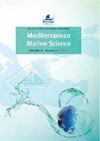First detection of the invasive protozoan Haplosporidium pinnae in the critically endangered bivalve Pinna nobilis in the Southern Mediterranean Sea (Bizerte Lagoon, Tunis) and update of its current status
IF 2.3
3区 环境科学与生态学
Q1 MARINE & FRESHWATER BIOLOGY
引用次数: 0
Abstract
Pinna nobilis (Linnaeus, 1758) populations have been severely damaged in the last few decades, and since early autumn 2016, a mass mortality event (MME) has drastically impacted populations in the Mediterranean Sea. Accordingly, the aim of the present study was to improve the knowledge on the status of P. nobilis populations in the Bizerte Lagoon (Tunisia) between 2016 and 2022. Before the MME, P. nobilis was found in the lagoon at depths from 1.5 to 6 m, with a density ranging from 2 to 30 ind/100 m². After the MME, mortality reached 100% in the monitored area, except in the eastern part of the Bizerte Lagoon near the Menzel Jemil site, where some living specimens were detected. Moreover, in 2022, successful recruitment was observed in the lagoon. Additionally, our results revealed the presence of Haplosporidium pinnae and Mycobacterium sp. in some living specimens sampled in the Bizerte Lagoon after the MME. This finding constitutes the first detection of both pathogens in Tunisia and in the entire Southern Mediterranean Sea.首次在地中海南部(突尼斯比泽尔特泻湖)极度濒危的双壳类Pinna nobilis中检测到入侵性原生动物pinnae单孢子虫,并更新其现状
在过去的几十年里,Pinna nobilis(Linnaeus,1758)的种群受到了严重破坏,自2016年初秋以来,一场大规模死亡事件(MME)严重影响了地中海的种群。因此,本研究的目的是提高对2016年至2022年间比泽尔特泻湖(突尼斯)诺比尔P.nobilis种群状况的了解。在MME之前,在1.5至6 m深处的泻湖中发现了P.nobilis,密度范围为2至30 ind/100 m²。MME后,监测区域的死亡率达到100%,除了在Menzel Jemil遗址附近的Bizerte泻湖东部,那里检测到了一些活标本。此外,在2022年,观察到在环礁湖成功招募。此外,我们的研究结果显示,MME后在比泽尔特泻湖采样的一些活标本中存在细单孢菌和分枝杆菌。这一发现是突尼斯和整个地中海南部首次检测到这两种病原体。
本文章由计算机程序翻译,如有差异,请以英文原文为准。
求助全文
约1分钟内获得全文
求助全文
来源期刊

Mediterranean Marine Science
MARINE & FRESHWATER BIOLOGY-
CiteScore
5.20
自引率
17.90%
发文量
34
审稿时长
>12 weeks
期刊介绍:
The journal Mediterranean Marine Science (MMS), published by the Hellenic Centre for Marine Research (HCMR), issues three volumes annually. The journal welcomes original research articles, short communications, New Mediterranean Biodiversity records, extended reviews, comments, and Theme sections in all fields of Oceanography, Marine Biology, Marine Conservation, Fisheries and Aquaculture in the Mediterranean area and the adjacent regions. All content is peer reviewed.
 求助内容:
求助内容: 应助结果提醒方式:
应助结果提醒方式:


